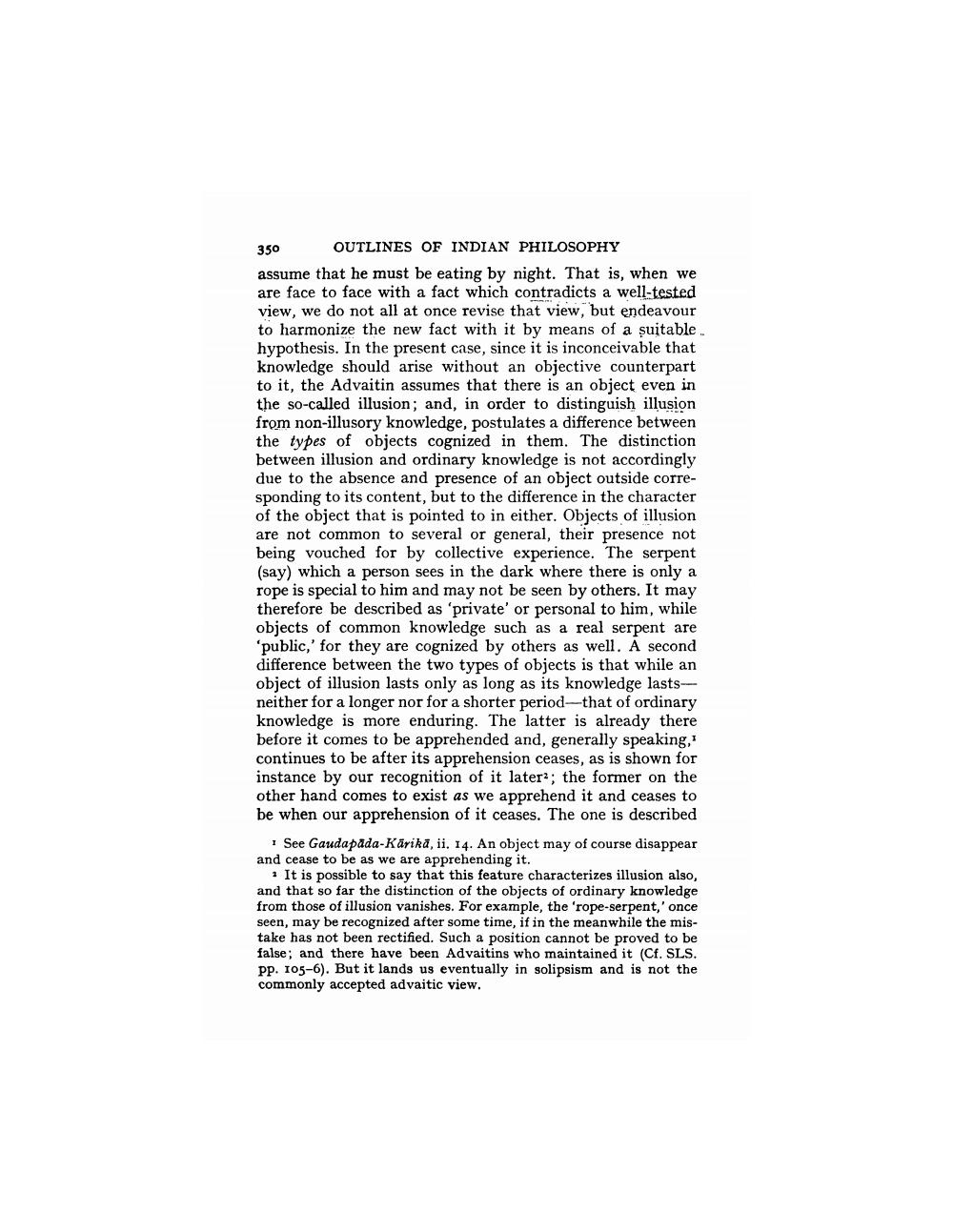________________
350
OUTLINES OF INDIAN PHILOSOPHY
assume that he must be eating by night. That is, when we are face to face with a fact which contradicts a well-tested view, we do not all at once revise that view, but endeavour to harmonize the new fact with it by means of a suitable. hypothesis. In the present case, since it is inconceivable that knowledge should arise without an objective counterpart to it, the Advaitin assumes that there is an object even in the so-called illusion; and, in order to distinguish illusion from non-illusory knowledge, postulates a difference between the types of objects cognized in them. The distinction between illusion and ordinary knowledge is not accordingly due to the absence and presence of an object outside corresponding to its content, but to the difference in the character of the object that is pointed to in either. Objects of illusion are not common to several or general, their presence not being vouched for by collective experience. The serpent (say) which a person sees in the dark where there is only a rope is special to him and may not be seen by others. It may therefore be described as 'private' or personal to him, while objects of common knowledge such as a real serpent are 'public,' for they are cognized by others as well. A second difference between the two types of objects is that while an object of illusion lasts only as long as its knowledge lasts--- neither for a longer nor for a shorter period-that of ordinary knowledge is more enduring. The latter is already there before it comes to be apprehended and, generally speaking,' continues to be after its apprehension ceases, as is shown for instance by our recognition of it later; the former on the other hand comes to exist as we apprehend it and ceases to be when our apprehension of it ceases. The one is described
1 See Gaudapada-Kärikā, ii. 14. An object may of course disappear and cease to be as we are apprehending it.
It is possible to say that this feature characterizes illusion also, and that so far the distinction of the objects of ordinary knowledge from those of illusion vanishes. For example, the 'rope-serpent,' once seen, may be recognized after some time, if in the meanwhile the mistake has not been rectified. Such a position cannot be proved to be false; and there have been Advaitins who maintained it (Cf. SLS. pp. 105-6). But it lands us eventually in solipsism and is not the commonly accepted advaitic view.




